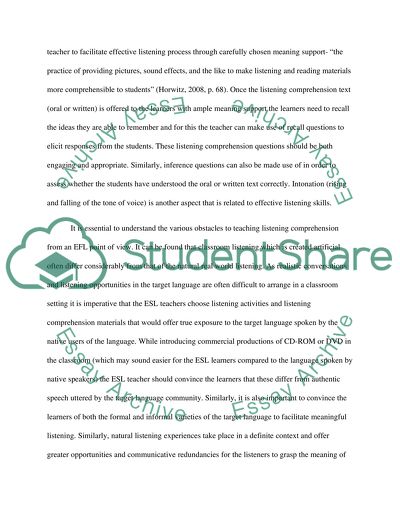Cite this document
(“Teaching Micro-skills of Listening Research Paper”, n.d.)
Teaching Micro-skills of Listening Research Paper. Retrieved from https://studentshare.org/education/1399076-essay
Teaching Micro-skills of Listening Research Paper. Retrieved from https://studentshare.org/education/1399076-essay
(Teaching Micro-Skills of Listening Research Paper)
Teaching Micro-Skills of Listening Research Paper. https://studentshare.org/education/1399076-essay.
Teaching Micro-Skills of Listening Research Paper. https://studentshare.org/education/1399076-essay.
“Teaching Micro-Skills of Listening Research Paper”, n.d. https://studentshare.org/education/1399076-essay.


